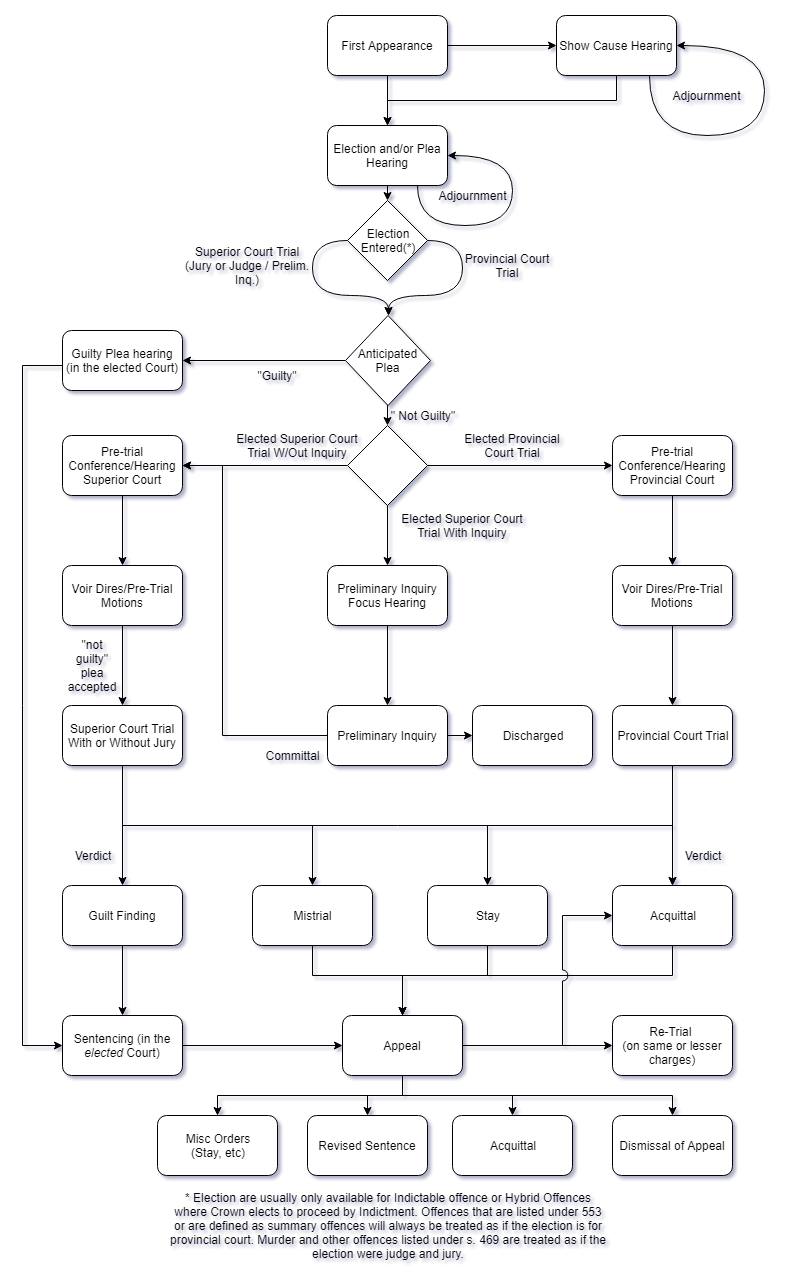Introduction to Procedure and Practice: Difference between revisions
m 1 revision imported |
m Text replacement - " Criminal Code " to " ''Criminal Code'' " Tags: Mobile edit Mobile web edit |
||
| Line 3: | Line 3: | ||
<!--****--> | <!--****--> | ||
==Preface== | ==Preface== | ||
This text was written as a reference on the procedure for prosecuting and defending Criminal Code offences. The audience for this text will be mostly criminal law practitioners, police officers, and law students, including those who need a convenient way to look up principles and case law. Where possible there are links to cited cases on CanLII for ease of reference. | This text was written as a reference on the procedure for prosecuting and defending ''Criminal Code'' offences. The audience for this text will be mostly criminal law practitioners, police officers, and law students, including those who need a convenient way to look up principles and case law. Where possible there are links to cited cases on CanLII for ease of reference. | ||
As of this writing this text remains a work in progress. Errors and omissions should be expected and so it is always recommended that source materials be consulted to confirm the contents of these materials. | As of this writing this text remains a work in progress. Errors and omissions should be expected and so it is always recommended that source materials be consulted to confirm the contents of these materials. | ||
Revision as of 09:34, 8 May 2019
Preface
This text was written as a reference on the procedure for prosecuting and defending Criminal Code offences. The audience for this text will be mostly criminal law practitioners, police officers, and law students, including those who need a convenient way to look up principles and case law. Where possible there are links to cited cases on CanLII for ease of reference.
As of this writing this text remains a work in progress. Errors and omissions should be expected and so it is always recommended that source materials be consulted to confirm the contents of these materials.
Organization of the Section
This section is grouped into three main parts. It is meant to cover all aspects of procedure from the point of initial investigation by police, including arrest and search powers, remedies for charter breaches during investigations, through to bail, which completes the first part. The second part reviews the duties of counsel in preparing for trial, most importantly the right to disclosure. The final part, and biggest, covers many areas of law beginning with the form of charges, pleas, and elections. Motions available before and during trial are then covered. The section also covers the law of preliminary inquiries and trial, focusing on each step of a trial as well as special consideration for jury trials. The last portion of the part involves appeals and cases involving the special procedures around those with mental disorders.

